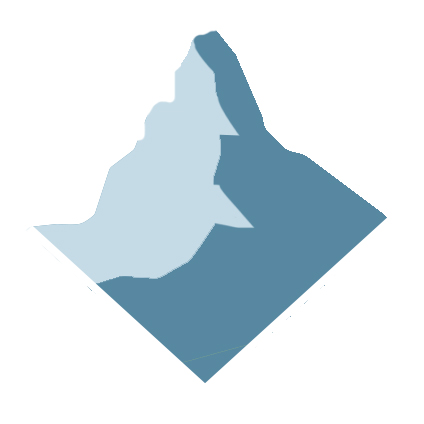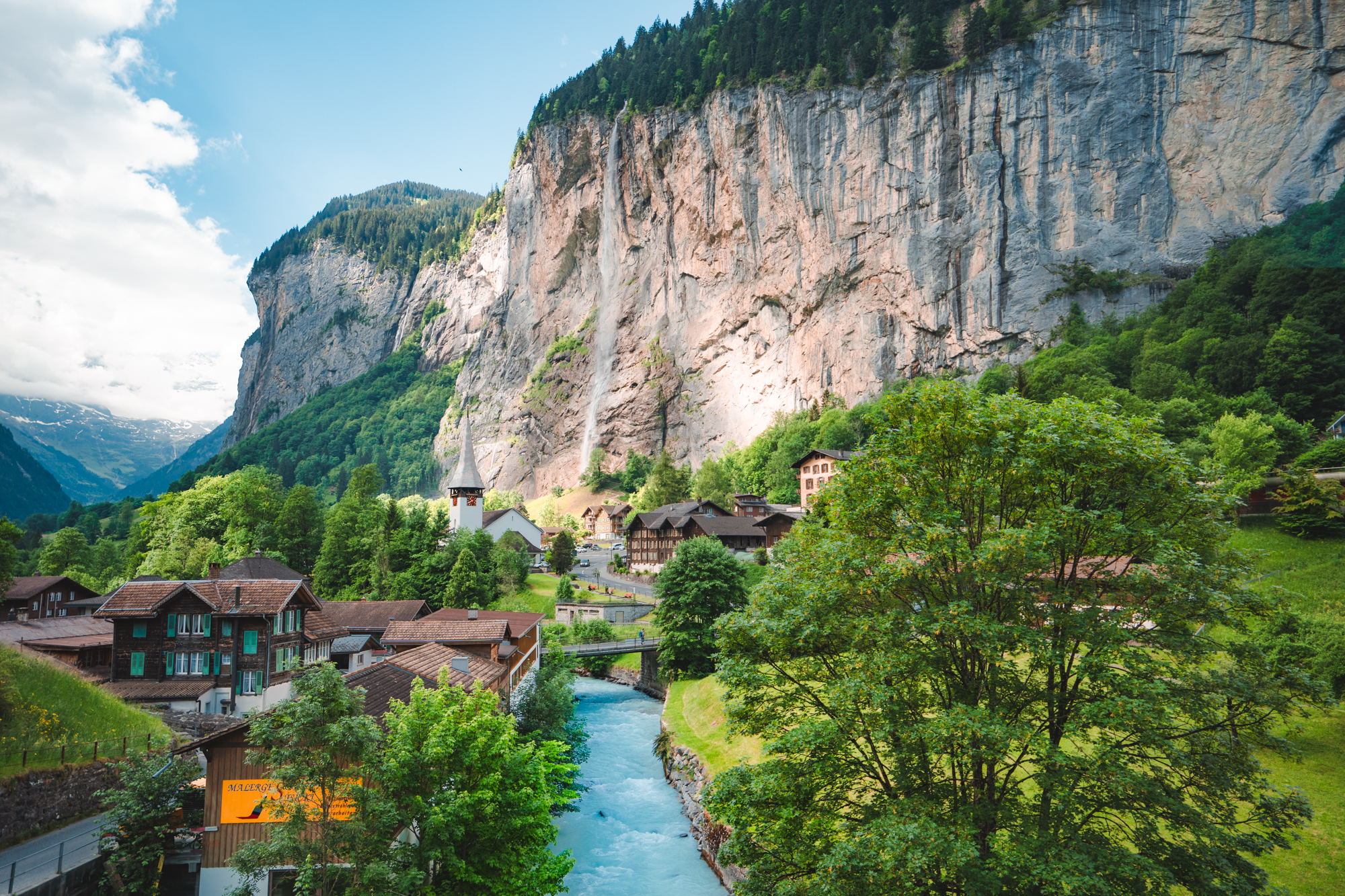Switzerland For First Timers
Are you visiting Switzerland for the first time? Or have you been there before and still want to learn some of the basics of Switzerland? Then welcome to our “Switzerland for First Timers” section. After reading it, you will be absolutely ready for your trip!
Who are we?
Hello, we are Claudia and Alex. We have been living in Switzerland since 2017. We spend a lot of time exploring this beautiful country and have visited all 26 cantons.
To help you have an unforgettable vacation in Switzerland, we would like to share our tips with you.
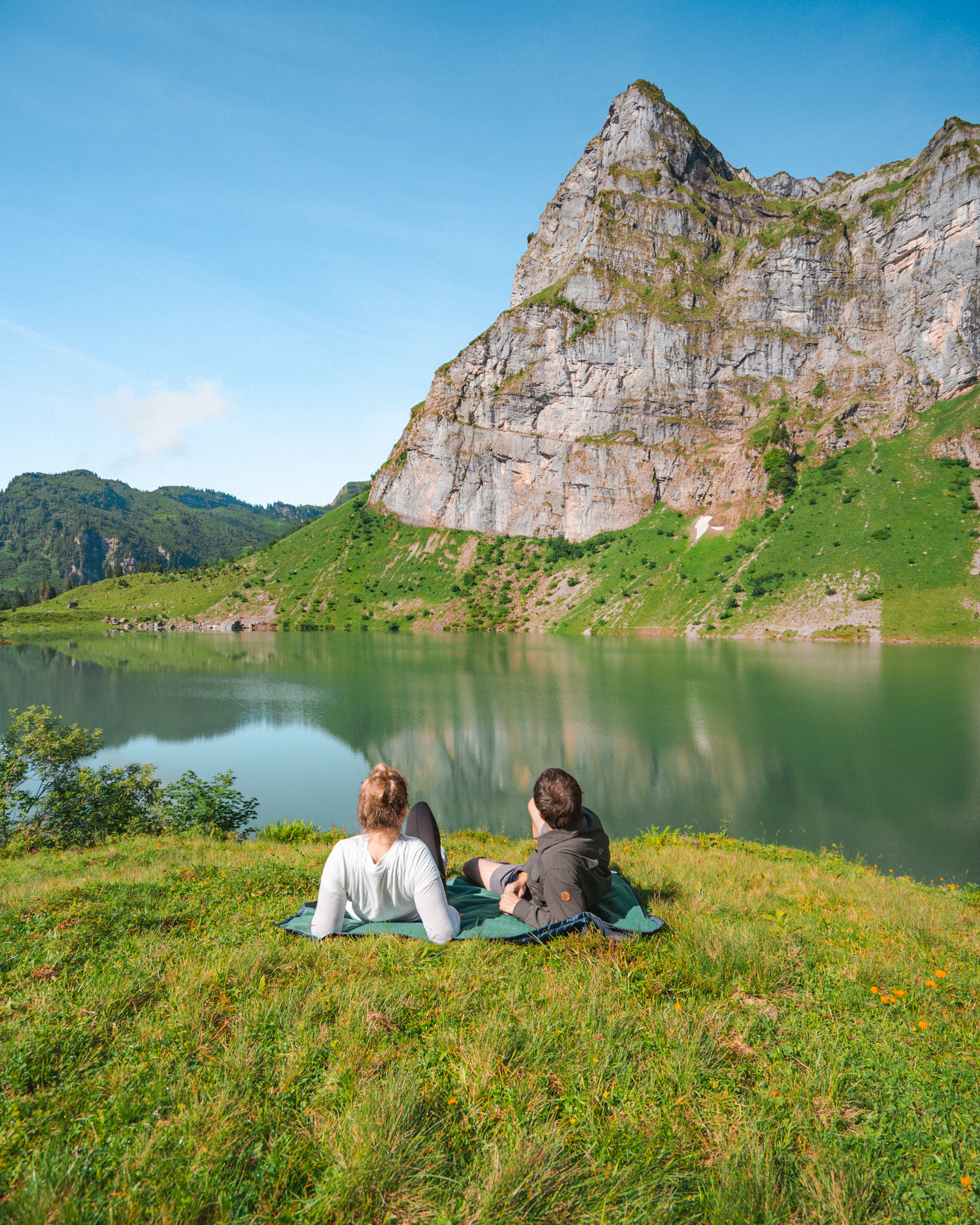
Basic things to know about Switzerland for first timers
Here are some important things to know.
- The country is called Switzerland. Swiss is often used as a synonym for Switzerland, but actually People who were born here or things that are made in Switzerland are called “Swiss”.
- Switzerland is not part of the European Union – and that very proudly.
However, it is a part of the Schengen Zone. If you are not European, the Schengen-Rule applies here: Under the terms of Schengen, non-EEA nationals cannot spend more than a total of 90 days within a total period of 180 days without a visa. - Switzerland does not use the euro. Its currency is the Swiss franc (CHF).
If you would like to know the current exchange rate for your currency, please use a daily exchange rate calculator (e.g. Xe). - Why is “CH” everywhere? CH stands for Confoederatio Helvetica. This is the official Latin name of the Swiss Confederation. The name was introduced after the creation of the federal state. Therefore, Switzerland’s country code is CH so as not to favor any of the four official languages.
Language
As mentioned above, there are four official languages: German, French, Italian and Rhaeto-Romanic. This does not mean that everyone speaks four languages. In fact, this is very rare. Usually the Swiss speak 2-3 languages depending on their background and age. Switzerland is divided into language zones:
German (62.6 %) is the most widely spoken language in Switzerland: 19 of the country’s 26 cantons are predominantly (Swiss) German-speaking.
The western part is French-speaking (22.9 %). Four cantons are French-speaking: Geneva, Jura, Neuchâtel and Vaud. Three cantons are bilingual: in Bern, Fribourg and Valais both French and German are spoken.
The southeastern part is Italian-speaking (8.2 %).
Rhaeto-Romanic speakers are a tiny linguistic minority (0.5 %) and live mostly in the canton of Grison.

What is Swiss German?
Swiss German is not just one dialect, as each canton in Switzerland has its own dialect. It is very different from High German. High German is the language taught in schools and used in official documents, news, television (except commercials) and most print media. Talking in Swiss German, is called “Mundart”.
Swiss German is the language of everyday life.
Can you get around Switzerland only speaking English?
For the most part, yes.
As a global business center, Switzerland has many English-speaking expats and tourists, which reinforces the need for many Swiss to speak English. The Swiss speak English quite fluently, especially in bigger cities, touristic areas and among younger people. But as in any country, it is nice to know at least a few words of the local language. Politeness is highly valued in Switzerland.
And be aware: Swiss people don’t say “Hallo” (hello) as in Germany, they say “Grüezi“.
Currency, Credit Cards, ATMs & Tipping
- Currency in Switzerland is the Swiss Franc (CHF).
- In Switzerland, credit cards are widely accepted. I haven’t used cash in months.
- ATMs are common in Switzerland.
- Do I have to tip at restaurants?
Tipping is not obligatory, but it is appreciated. You may have read that it is not customary to tip in Switzerland. I have not had this experience. Also in Switzerland, it has slowly become accepted to tip about 10% for good service. It depends on the region and the restaurant. But it’s not expected and please don’t feel obligated to tip. Unlike Americans, the Swiss have a good hourly wage and are not dependent on tips.
Electricity
- The voltage in Switzerland is 230 V.
- The most common socket is the Type J (3-pin) socket (both recessed and flat).
- The types C and F (2-pin) are also usable.
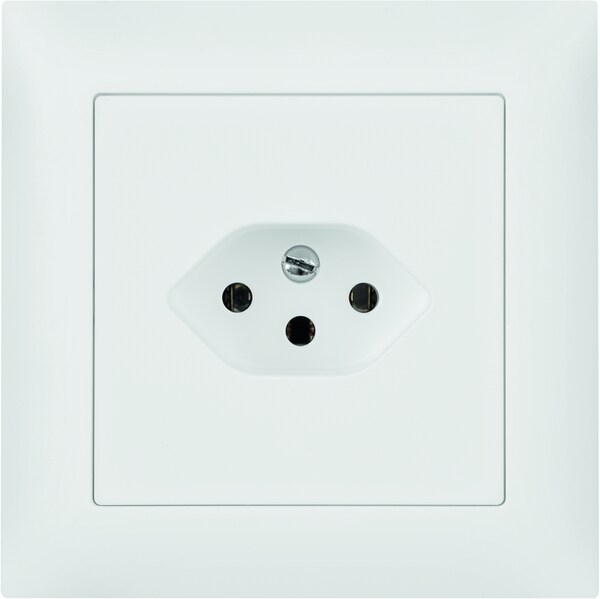
Weather in Switzerland
- Overall, Switzerland has a mild climate, but it varies greatly from region to region. Ticino is usually warmer than other regions and if you visit a mountain region it is colder. Switzerland has 4 seasons and summers can be very hot (around 30°C) and winters very cold (between 10°C to -10°C).
Please note that ACs are not common in Switzerland. - The weather in Switzerland can change very quickly, especially in the mountains. Always bring layers. A jacket is a must when hiking.
- Take advantage of the installed webcams. There are plenty of them in the mountains so you can always check them. Just google your location + webcam and you will find it.
What is the best time of year to visit?
Depending what you are looking for.
Hiking: mid June to mid. October
Skiing: December to February
Waterfalls: March to May
City Trips: All Year around
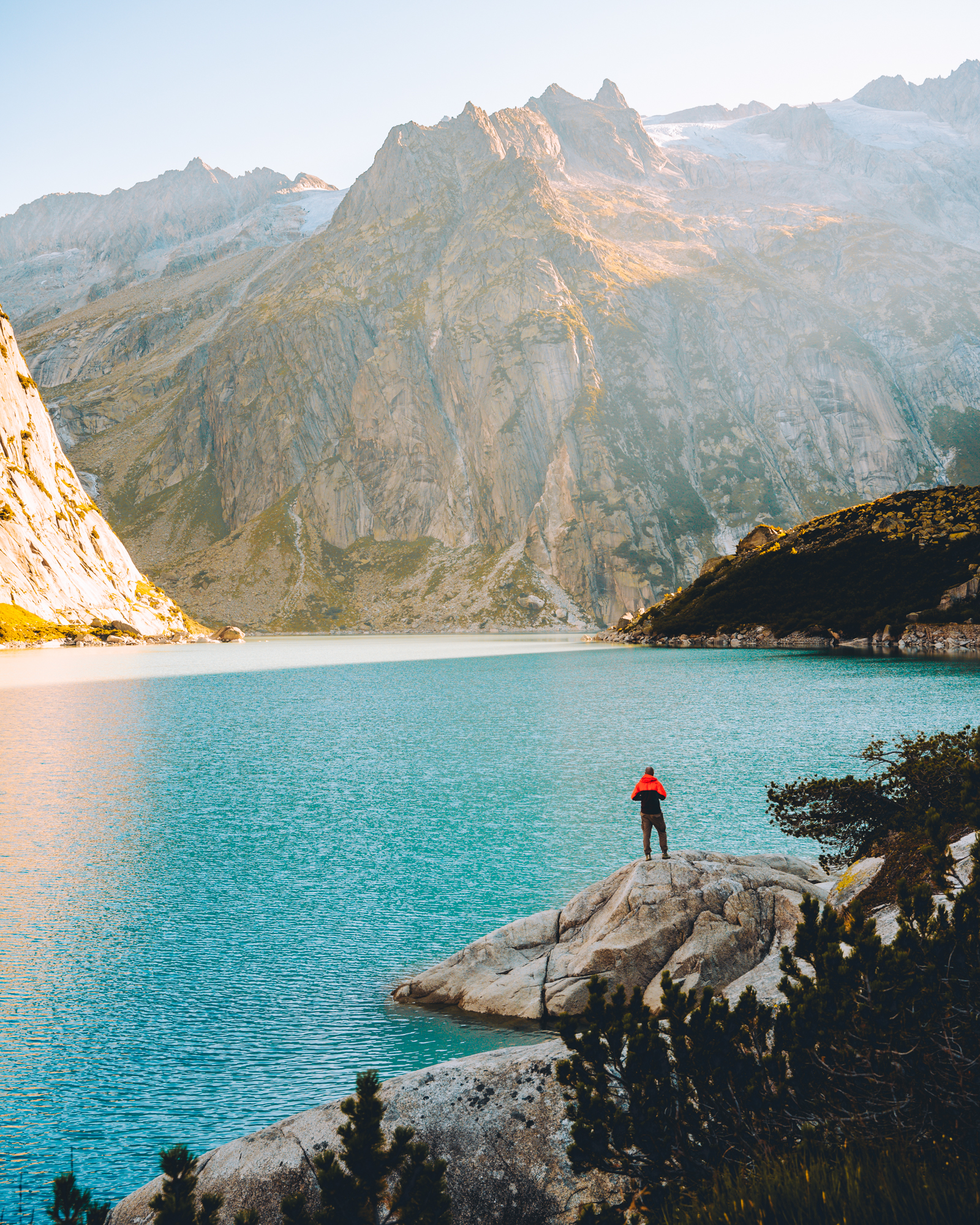
Safety in Switzerland
Switzerland is a very safe country. It has one of the lowest crime rates and I always feel safe here. Therefore, it is also safe for women traveling alone.
Swiss people even leave their belongings unattended on trains. I even left my wallet on the train once and it was in the lost and found the next day – including my CHF 50 in cash.
I would still recommend taking care of your belongings and being aware of your surroundings. Especially in larger cities like Zurich or Geneva.
Fountain & Tap Water
Public water fountains and tap water are safe to drink. Bring a reusable water bottle and fill up at the fountains to save money and reduce waste.
Public Restrooms
Switzerland has a mix of paid and free public toilets.
If you have to pay, it is usually around 1 CHF, so have some coins ready.
Public Transportation in Switzerland for First Timers
- Getting around Switzerland is very easy and stress-free because Switzerland has an extensive, well-coordinated network of trains, buses, and boats. Everything runs on time and you can really rely on it. Even mountain tops are easily accessible by cable car or the so-called “Postbus” (a bus especially for mountain regions). You don’t necessarily need to rent a car.
- Both have their advantages and disadvantages. If you take public transportation, you will see amazing views without stress during your trip.
- If you take a car, you will see different views (e.g. mountain passes) and have more flexibility. If you are a group of travelers, a car is probably cheaper.
- If you choose to use public transportation, I recommend downloading the SBB Mobile app. It is very easy to view schedules and plan your route using all modes of public transportation.
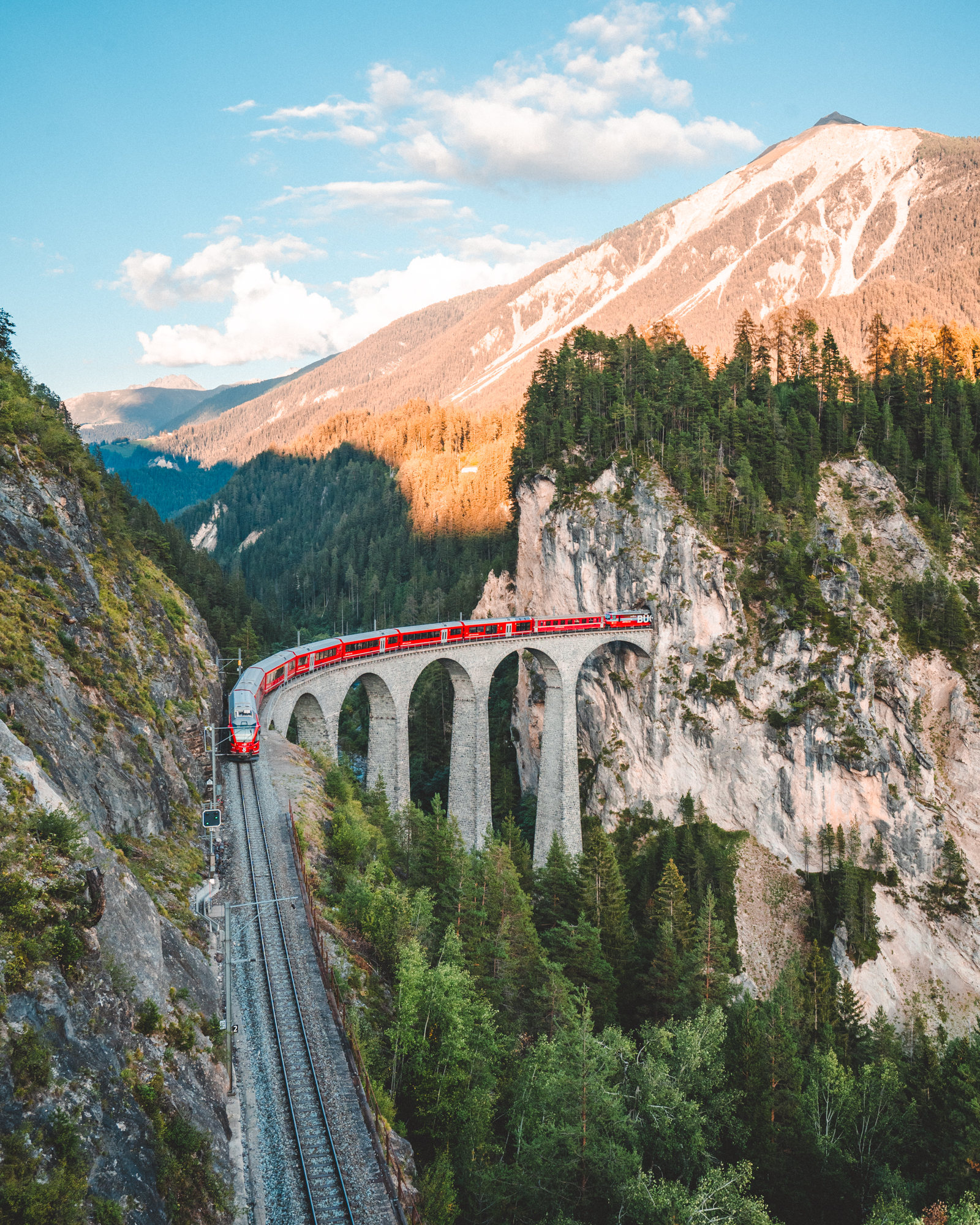
Swiss Travel Pass
The Swiss Travel Pass is a card that gives you free travel on trains, boats and buses in Switzerland. It also includes some mountain excursions or at least a 50% discount on many mountain railways. Trips on premium panoramic trains are also included, so if you are interested in these, check them out. Admission to over 500 museums is also included, but I don’t know a single person who used it to visit a museum.
For 3, 4, 6, 8 or 15 consecutive days, you can choose a Swiss Travel Pass.
The Swiss Travel Pass can be purchased online from various websites or at service desks in Swiss railway stations.
For more information, check out the official page of SBB.
Side Info: The main railway company is Swiss Federal Railways, known by its initials SBB in German, CFF in French and FFS in Italian.
Tickets and Reservations
- Train tickets can be purchased at ticket machines or counters in stations, online or via the SBB Mobile app. Rail Passes can be purchased online or at Swiss railway stations.
- Most trains in Switzerland don’t require reservations. Simply board the train with your train pass or ticket and choose an available seat. However, please check beforehand to see if the seat is reserved. There are signs above each seat. Exceptions are international trains and panorama trains such as the Glacier Express, Bernina Express or Gotthard Express, which require seat reservations for an additional fee.
Seat Types- First and Second Class
- Trains in Switzerland have first and second class cars. First class cars are marked with a 1 and second class cars are marked with a 2 on the outside of the wagon. Signs above the platform indicate where the cars will stop. First class is usually at the front and rear of the train.
- Second class is noticeably more crowded and noisy because second class is more often booked due to its lower price. First class seats are a bit more spacious, but not by much. We recommend first class only for special trains like the Golden Pass Line or the Gotthard Panorama Express.
On-Board Services
- InterCity and EuroCity trains have a restaurant that serves snacks, meals and drinks. Special panoramic trains have a catering that travels around and sells full meals, snacks and drinks.
- Many trains have electrical outlets, but not all, so please do not rely on this.
What are the best train trips in Switzerland for first-time (and experienced) sightseers?
- Bernina Express
- Glacier Express
- Gotthard Express
- Golden Pass Line
- Montreux – Lausanne
- Rapperswil – Küssnacht
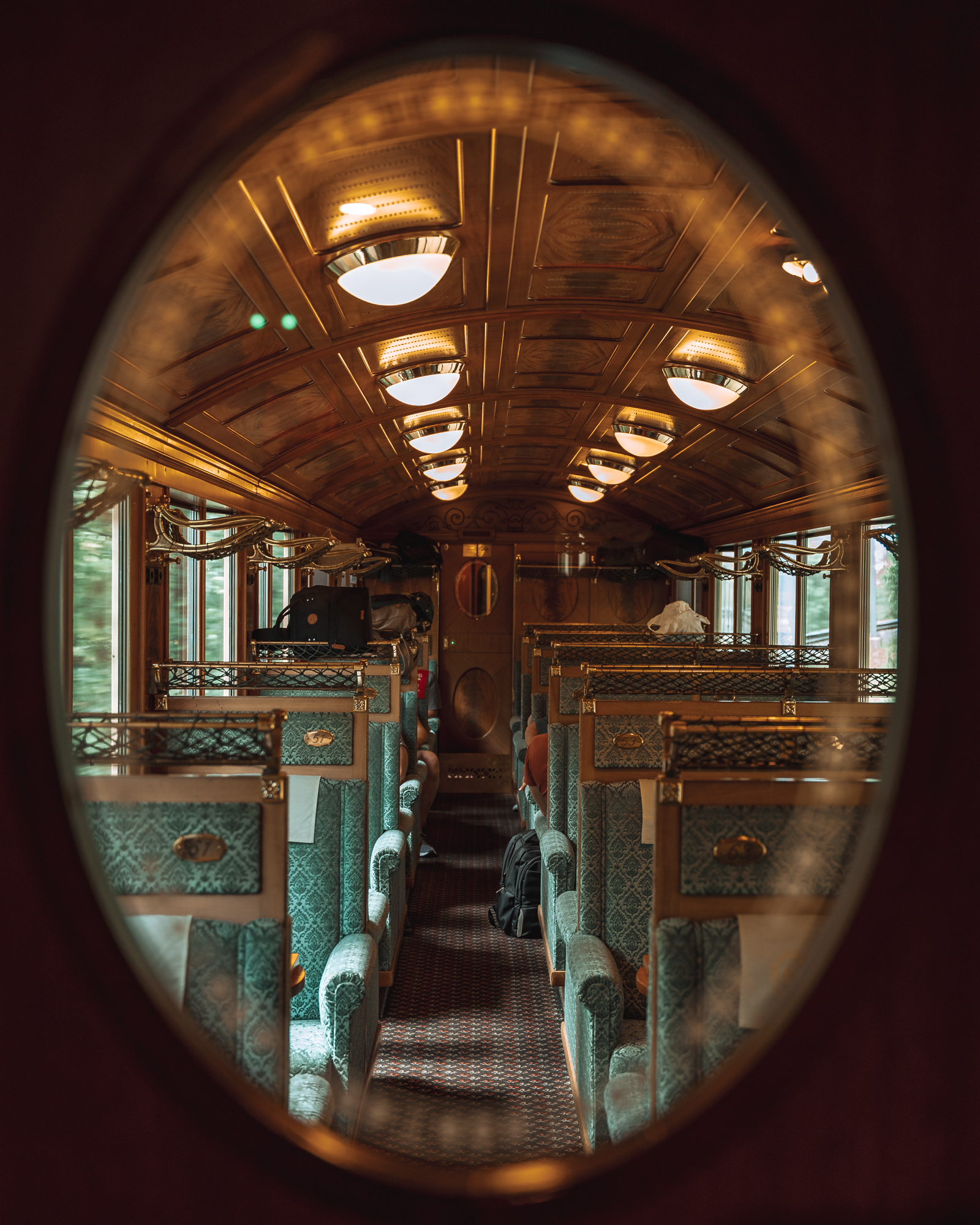
Traveling by Car in Switzerland
Basics about driving a car in Switzerland
If you are traveling by car, you should consider purchasing a toll sticker (Vignette) in advance. You cannot drive on the highway without one. You can get pretty much anywhere without one, but it’s a bit of a hassle. We would recommend one, but it is up to you to decide, depending on how long you plan to stay in Switzerland.
It is only possible to buy an annual vignette, which costs CHF 40.
Driving in Switzerland is cheaper than taking the train, as long as there are at least two of you. Gasoline is sometimes only a little more expensive than in Germany. Diesel, however, is more expensive than gasoline (sometimes even Super Plus)! But more on that later.
As far as driving is concerned, even ordinary country roads can be very narrow and winding. If you are driving up the mountains, there are often 180° hairpin bends and sometimes you are driving along steep cliffs.
You should have a good command of your car, if you don’t just want to drive on the highway in Switzerland, but also want to drive over a pass.
In addition, please note that manual transmissions are more common in Switzerland than automatic transmissions, if you want to rent a car.
Parking Marks in Switzerland
You will find the following markings to park:
White spaces: Usually parking areas with a limited parking time for a fee. If there is no sign, you can park for free. Be careful not to park for more than 24 hours in one place, as there are heavy fines. As parking time varies from municipality to municipality, we cannot give any advice.
Blue spaces: This is where you park with a parking disc (be sure to take one with you). There are often specific times when you need a parking disc, but on Sundays it is usually free and you do not have to show the disc.
Yellow spaces: These are usually private or customer parking spaces.
Always pay attention to the times, it is often free at noon (e.g. in Montreux) or free from 8 p.m. (Lausanne). In Thun we found a parking lot with a parking disk. Even though it was marked white and not blue, we could park there for free for four hours.
So keep your eyes open.
If one or two of you feel like hitchhiking, you are welcome to try it. But it is very unusual in Switzerland. In the last 6 years we’ve only seen a handful of people who wanted a lift. However, since Switzerland is considered a very safe country to travel in and hitchhiking can be considered a low-risk activity, it may be worth a try.
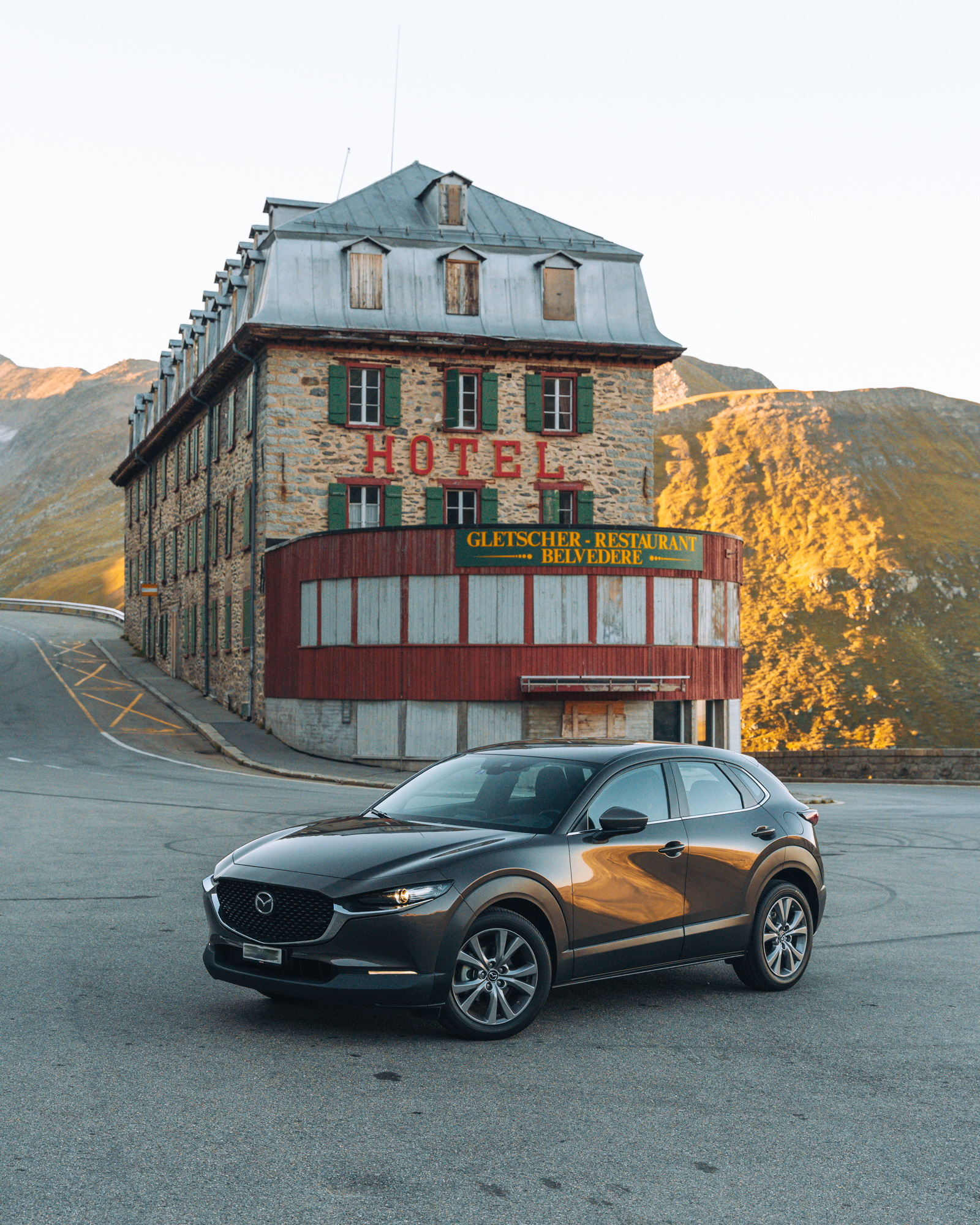
Tips for travelling Switzerland on a tight budget?
Want to travel Switzerland on a budget? For clarification, it is not impossible, but please have in mind that it is still more expensive than a trip to Thailand for example.
We have a whole article dedicated to this topic. Check it out here.
Walking and Hiking in Switzerland
- There are many well-maintained hiking trails in Switzerland. They are marked with yellow signs, often with an estimated time to the next destination.
We found the time to be mostly accurate, but if you are not used to hiking, allow yourself more time. Also, the Swiss are real hiking warriors. - Hiking routes on mountain trails are marked yellow, a red stripe on a white background or a blue stripe on a white background depending on the difficulty. The trail marker can be painted on rocks, trees, and buildings. So, always check your surroundings.
- There is a hiking scale (SAC) for each trail if you check the official sites. The Swiss hiking scale is divided into six levels ranging from T1 to T6 and is mainly based on the characteristics of the trail. For instance, T1 indicates a well-marked trail with no dangers.
| Hiking Level | Marking Swiss Walking Paths | Path |
| T1 Hiking | Yellow | Well developed, signposted and marked. |
| T2 Mountain hiking | White-red-white | Continuous route and passage marking. |
| T3 Challenging mountain hiking | White-red-white | A footpath is usually present. Exposed areas are usually secured with ropes or chains. |
| T4 Alpine hiking | White-blue-white | Path not necessarily available. Sometimes need to use hands to keep going. |
| T5 Challenging Alpine walking | White-blue-white | Often without a path. Individual, simple climbing sections. |
| T6 Difficult Alpine walking | Mostly unmarked | Mostly without a path and unmarked. Climbing sections up to II. |
For more Information visit the Swiss Alpine Club here.
Swiss food specialties
Some Swiss must-tries in Switzerland for first timers include:
- Fondue: A delicious pot of melted cheese that you dip bread in.
- Raclette: An amazing cheese that you melt a layer of and scrape over top potatoes or bread.
- Rösti: a kind of crispy potato pancake. We recommend it with cheese!
- Chocolate: No explanation needed. We recommend “Läderach”.
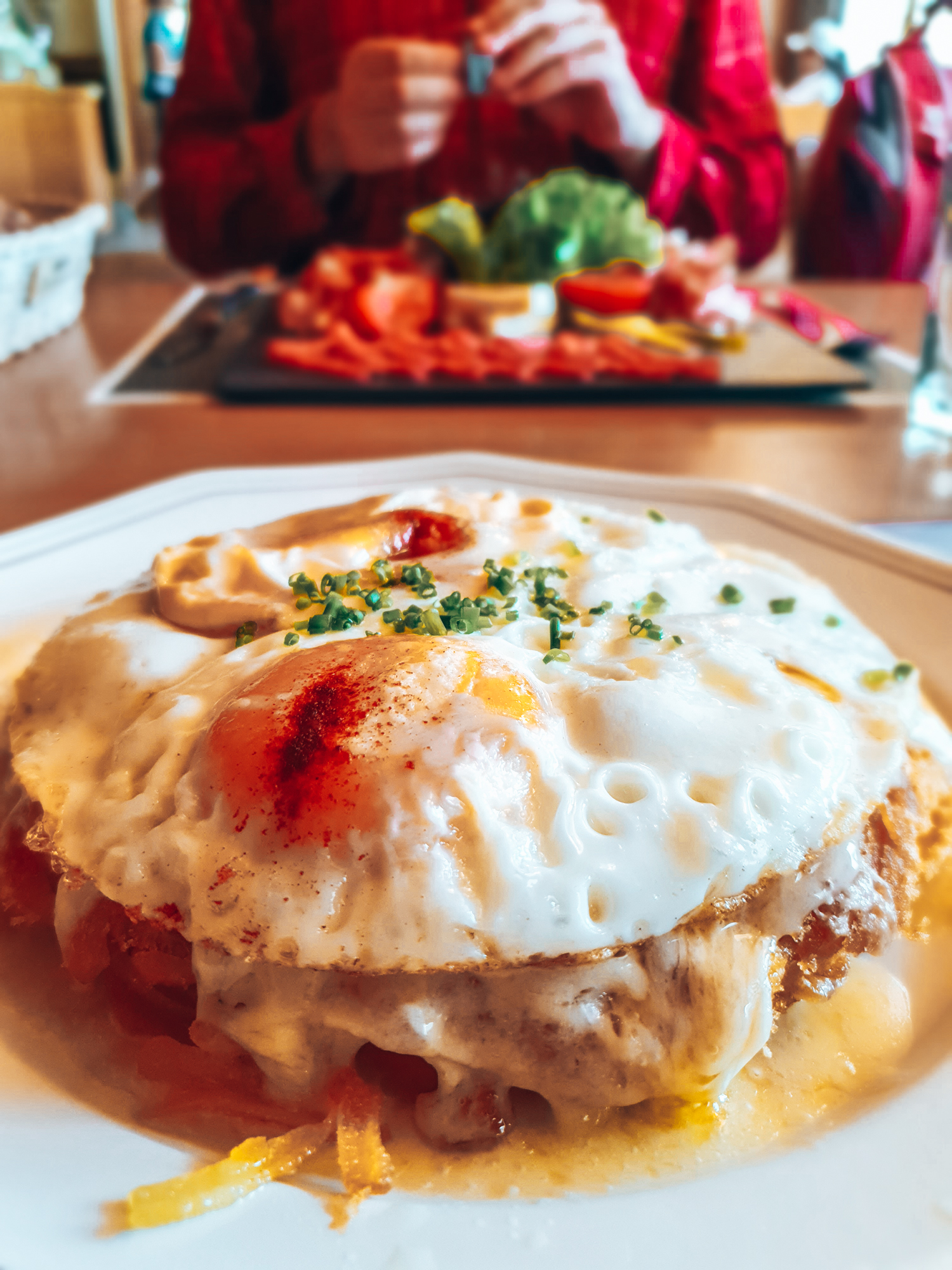
Where to Go in Switzerland for first timers?
It is hard to decide when you visit Switzerland for the first time. Therefore, I would like to give you some personal recommendations on specific topics:
Most popular places for a week:
Zurich, Lucerne, Interlaken, Jungfraujoch, Lauterbrunnen and Zermatt.
My city recommendations:
Zürich, Stein am Rhein, Luzern, Lugano, Morcote, Rapperswil and Zermatt.
My hiking recommendations:
Appenzell: Lake Seealp, Äscher, Saxer Lücke and Lake Fälen.
St. Gallen: Pizol (5 Lake Trail) and Batöni Waterfalls.
Bern: Kleine Scheidegg, Lake Oeschinen, Lake Gelmer and Lake Bachalp.
Glarus: Lake Oberblegi and Lake Limmeren.
Zermatt: 5 Lake Trail, Gornegrat, Riffel lake.
However, I will soon be releasing guides for various occasions. Stay tuned!
